Dr. Phil Zeltzman’s Blog
10 deadly sins of untreated ACL tears
Pet owners sometimes ask what would happen if we didn’t address a torn anterior cruciate ligament (ACL). Dr. Google and random people will suggest conservative treatment as a perfectly valid option.
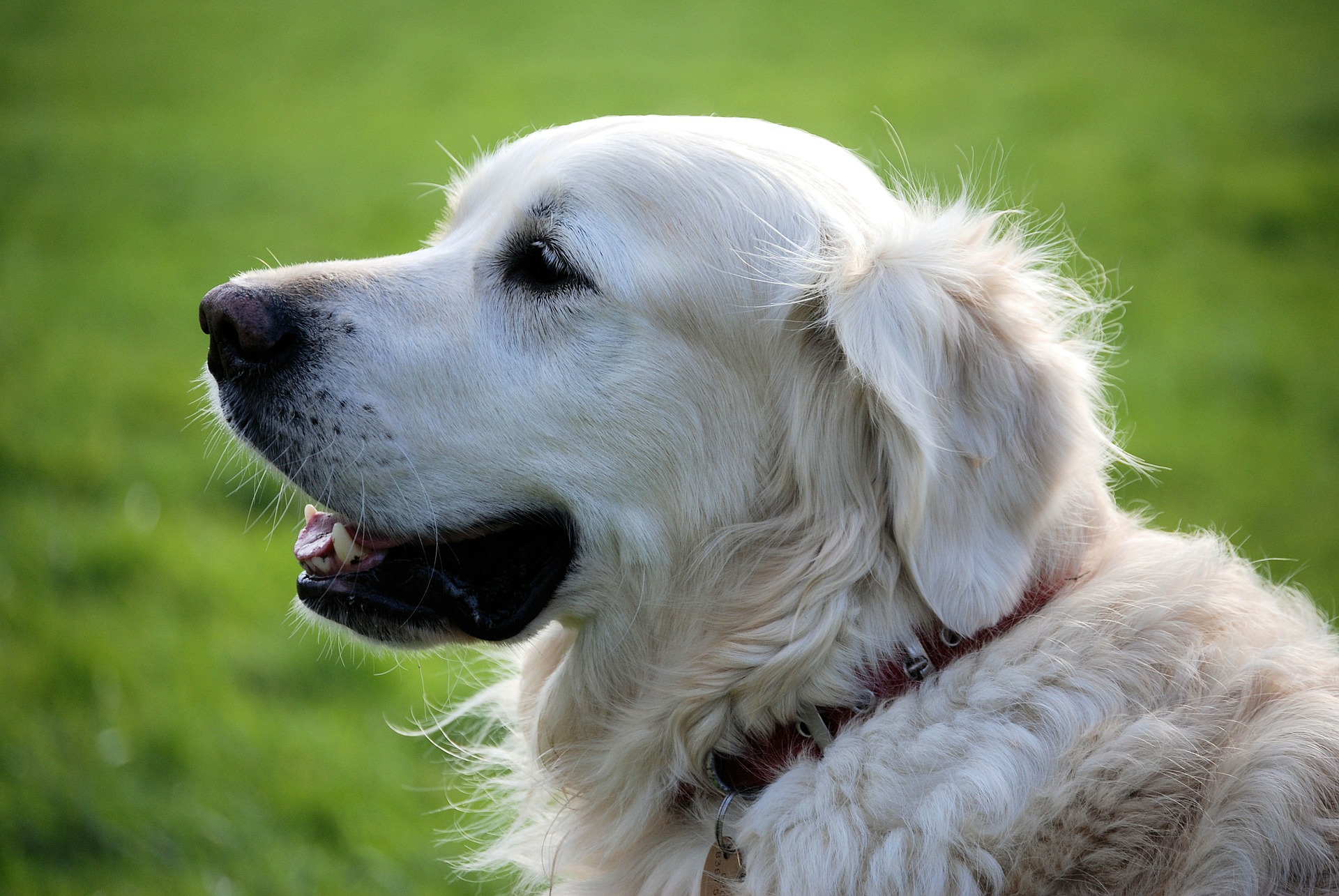
A non-surgeon colleague even wrote elsewhere that since people often don’t need surgery for an ACL tear, then we shouldn’t need it in dogs. Respectfully, this shows a basic misunderstanding of the differences in functional anatomy between dogs and humans. Let’s mention two:
. Humans are straight legged. Dogs always have their knees flexed when standing.
. The human tibial plateau angle is somewhere around 7 degrees. Dogs’ tibial plateau angles vary from around 20 to over 60 degrees, with a back-of-the-envelope average of 24 to 28 degrees in most of my tibial plateau leveling osteotomy (TPLO) patients.
How many reasonable, objective, ethical, honest reasons can you find to recommend conservative treatment as opposed to surgery?
Here are 10 consequences of untreated ACL tears:
1. Pain
Patients with a torn ACL are in pain.
Please remember that limping or favoring or babying a leg = pain.
Pets are not crazy! Holding the affected leg up or limping hurts less than putting full weight on the leg.
When the tear becomes older, pain might subside to some degree, but it stills hurts.
Another reason patients are limping is because the knee is unstable or wobbly.
2. Arthritis
We routinely notice during surgery that patients with long-standing (chronic) ACL tears have more arthritis than patients with a recent injury. This, in turn, leads to pain.
Patients with partial tears typically have less arthritis than patients with complete tears. Recent tears also regularly lead to less arthritis than older (chronic) tears.
Therefore, the sooner we perform the surgery, the better for the patient.
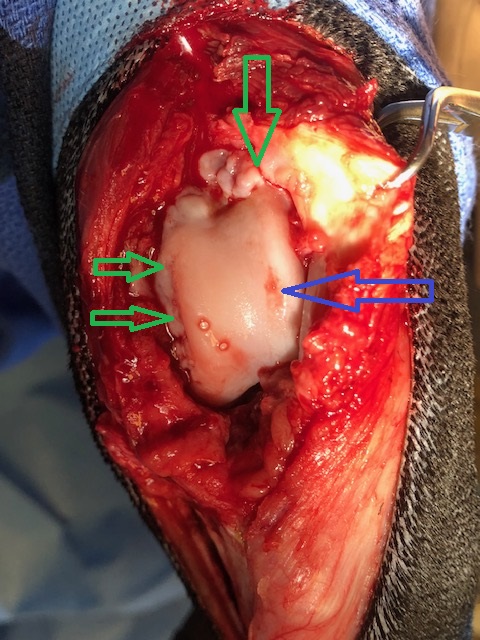
3. Scar tissue
Scar tissue is what we rely on after conservative treatment for an ACL tear. Experience proves that scar tissue alone is not enough to provide good function, at least in medium- and large-breed dogs.
Scar tissue is manifested by what we call the “medial buttress,” which can be a very prominent bulge inside a pet’s knee.
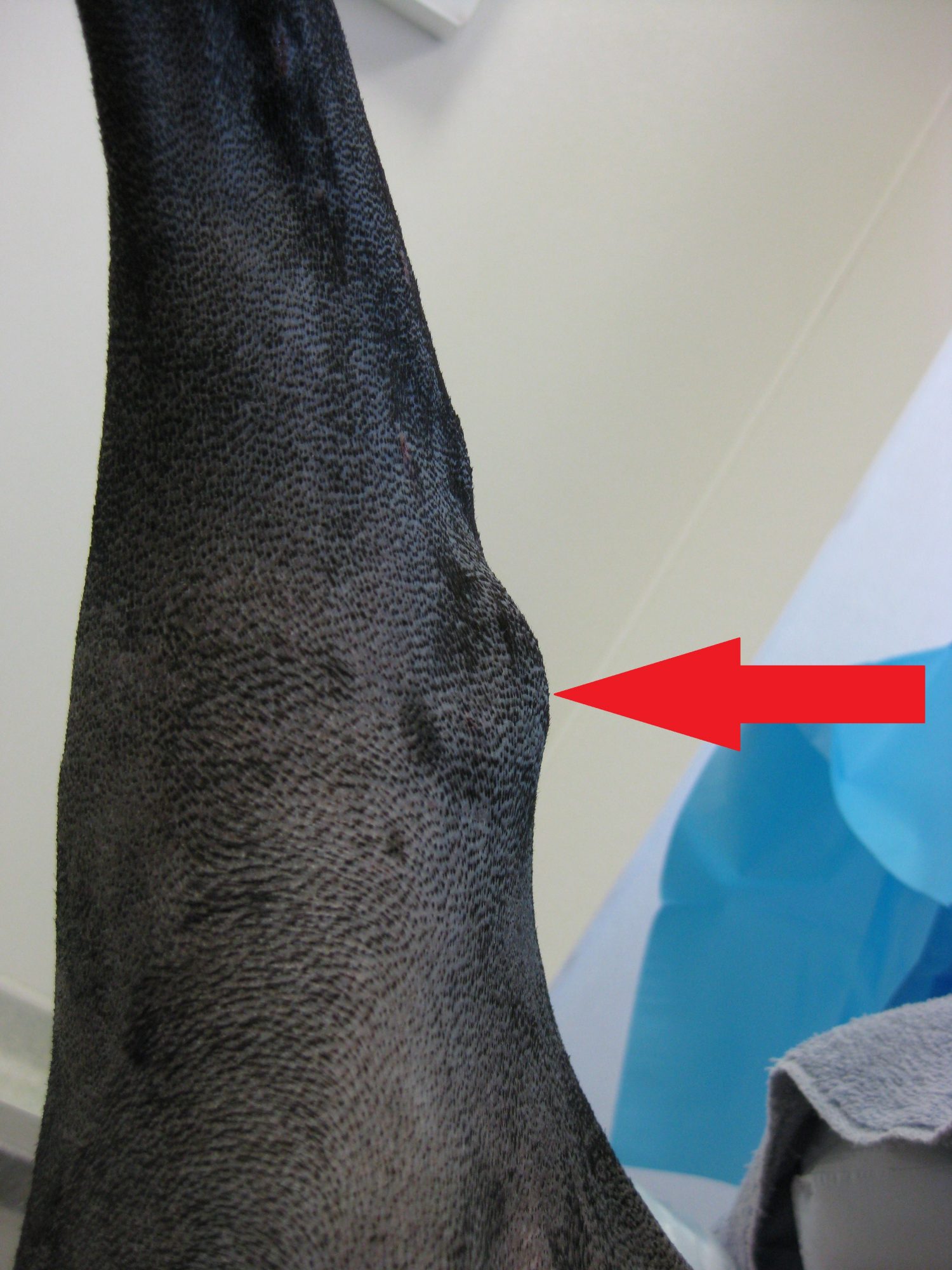
In turn, scar tissue leads to our next point.
4. Decreased range of motion
A long-term consequence of arthritis and scar tissue is a decreased range of motion of the knee.
Patients with older (chronic) ACL tears commonly experience a decreased range of motion. This might not matter much to a couch potato, but it will affect the performance of an active family pet or a working dog.
5. Muscle atrophy
Patients who favor a hind leg classically show various degrees of muscle atrophy because of poor use of the leg.
This can be assessed easily by measuring the circumference of the thigh with a simple tape measure.
6. Exercise intolerance
Obviously, a family pet or working dog will have a tough time running around with a sore knee.
Dogs with a torn ACL are reluctant to play or go for walks. Exercise intolerance or poor athletic performance classically leads to weight gain, because these pets often receive the same amount of food (and sometimes more, along with more treats).
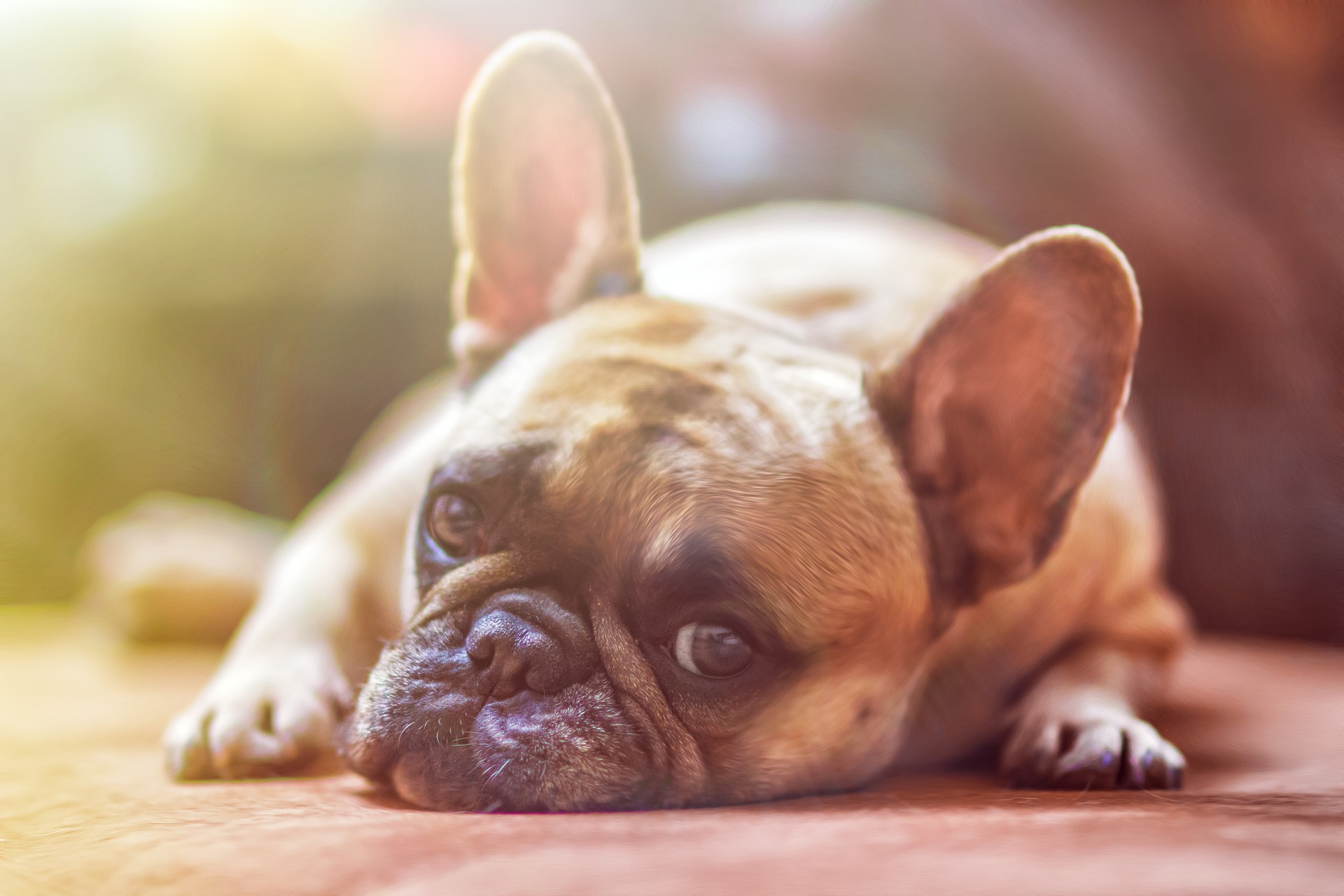
7. Weight gain
A consequence of many of the above changes is decreased activity, which invariably causes weight gain.
This is a common observation in ACL patients. Unless you decrease your pet’s food intake to match the decrease in activity, weight gain is inevitable.
8. Opposite ACL tear
Arguably, weight shifting may lead to a tear of the opposite ACL. While this might be manageable in a yorkie or a cocker, it becomes a much bigger problem with a Labrador or a mastiff. Helping a 100 lb dog who has both ACLs torn at the same time is not easy!
9. Tear of the meniscus
Instability in the knee can lead to a tear of the meniscus (see picture below), which is a pad of cartilage in the knee. This can cause even more pain.
On the opposite, once the knee is stabilized, the risk of a tear of the meniscus is minimized.
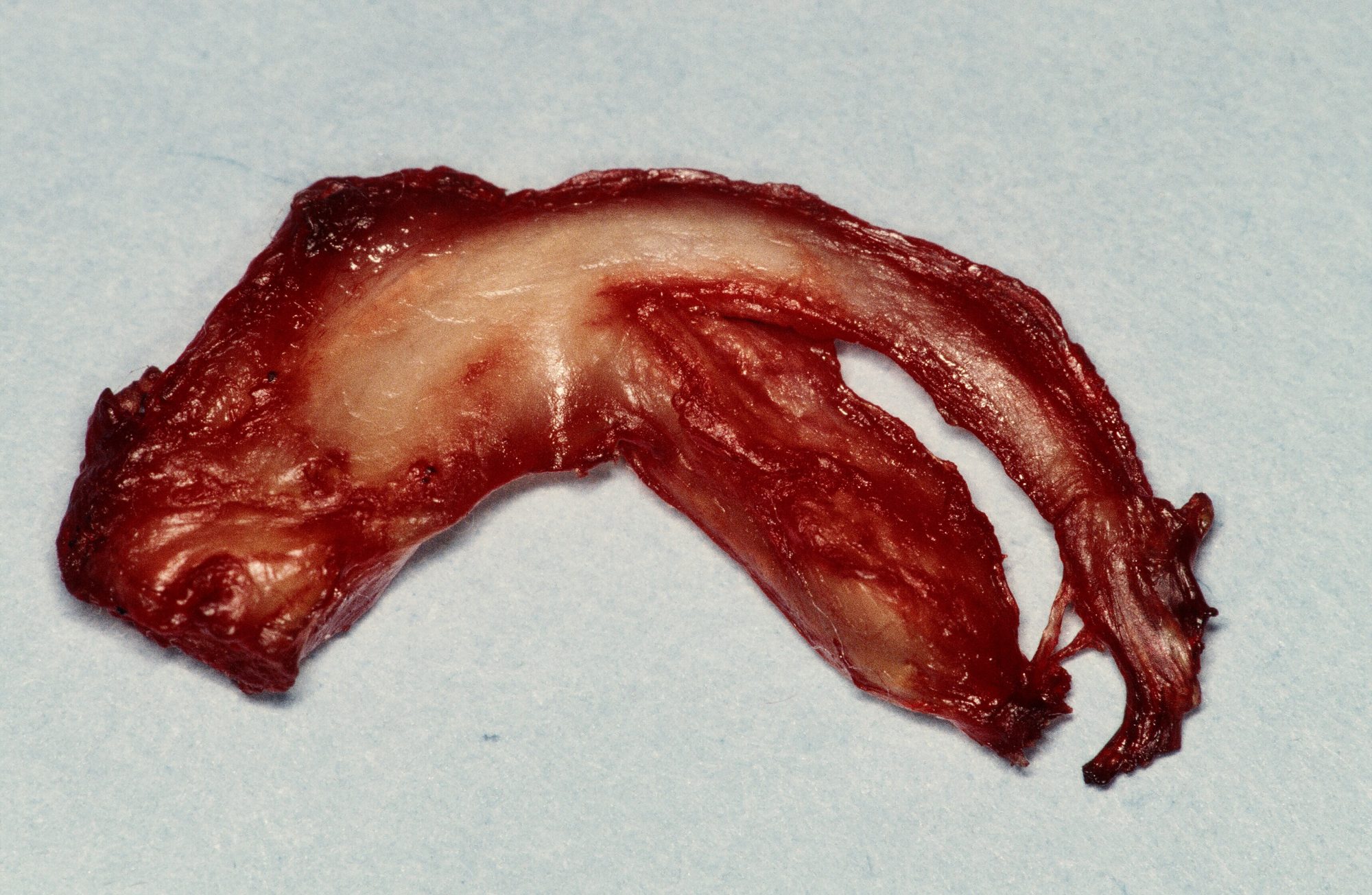
10. Distant problems
The changes in gait and posture can affect all three other legs, as well as the spine. Weight shifting may cause or exacerbate an orthopedic problem in another leg.
A doggie physical therapist told me once: “An ACL rupture is the beginning of a cascade of events in other body parts – joints, muscles – that we can’t forget.”
To a degree, some of the above changes can be used to “date” an ACL tear. From experience:
. A patient with a recent ACL tear classically is lame and painful.
A patient with an old (chronic) ACL tear typically presents with limping, pain, arthritis, decreased range of motion, muscle atrophy and weight gain. In surgery, we certainly see much more bone spurs in a dog with a chronic tear than with a recent tear.
From a surgeon’s standpoint, an ACL tear is a very fixable problem.
Sure, it is possible to live with a torn ACL. Certainly, it might be the only option if you absolutely cannot afford surgery.
ACL surgery has changed dramatically over the past few years. I now expect a return of at least 95 % of normal function in at least 95 % of my patients of any size after ACL surgery, of any type.
So it’s hard for me to believe that affected dogs, especially large ones, have (and will have) a good quality of life with an untreated ACL tear.
Phil Zeltzman, DVM, DACVS, CVJ, Fear Free Certified

Dr. Phil Zeltzman is a traveling veterinary surgeon in Pennsylvania & New Jersey. An award-winning author, he loves to share his adventures in practice along with information about vet medicine and surgery that can really help your pets. Dr. Zeltzman specializes in orthopedic, neurologic, cancer, and soft tissue surgeries for dogs, cats, and small exotics. By working with local family vets, he offers the best surgical care, safest anesthesia, and utmost pain management to all his patients. Sign up to get an email when he updates his blog, and follow him on Facebook, too!

